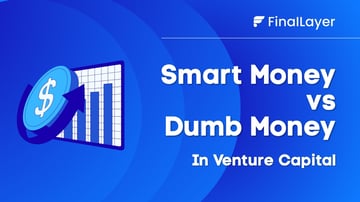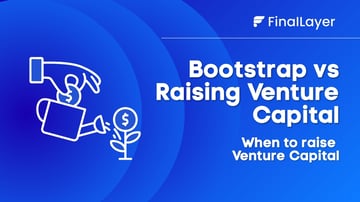Creating an angel pitch deck that actually raises money requires understanding what angel investors look for and how they evaluate opportunities. An effective angel pitch deck isn't just a presentation about your company - it's a strategic tool designed to earn you a conversation with investors who can fund your vision. In early 2025, we raised half a million dollars from some amazing angel investors within six weeks using the exact angel pitch deck framework I'm about to share with you. The principles behind a successful angel pitch deck are counterintuitive: less is more, visuals beat text, and honesty about unknowns builds more credibility than false certainty.
Understanding the 10-Second Reality
The first thing to keep in mind when creating an angel pitch deck is that the average time an investor will spend on your deck before they make a decision on whether they want to speak with you is less than 10 seconds. This might seem shockingly brief, but it's the reality of how investors work. They receive hundreds of decks, and they've developed the ability to quickly assess whether something is worth their time.
This means the first three slides in your angel pitch deck are going to make a monumental impact on this decision. Think of these slides as your only chance to grab attention before an investor moves on to the next opportunity in their inbox.
The Critical First Three Slides of Your Angel Pitch Deck
In those three slides, you want to cover who you are, what problem you're solving, and why this problem is worth solving. Let me break down each of these in detail.
The first slide should introduce who you are, but more importantly, this slide should make it evident as to why you are the right team to solve this problem. This is crucial because good angel investors are funding you and not your idea. The broad area that you're going to work on is of interest to them, but not the specific idea itself. They know that ideas evolve, pivot, and change, but the quality of the founding team remains constant. They're betting on your ability to navigate uncertainty and build something meaningful, regardless of how much your initial concept changes along the way.
The second slide should clearly articulate what problem you're solving. Be specific here. Vague problem statements don't resonate with investors because they signal that you haven't done enough customer discovery or market research.
The third slide needs to explain why this problem is worth solving. This is where you demonstrate market opportunity and urgency. Why does this problem matter? Who's affected by it? What happens if it remains unsolved? These questions help investors understand the potential impact and scale of what you're building.
What Comes After: The Remaining Slides
Beyond the first three slides, your angel pitch deck really should be about any special insights you have about this area. These are the non-obvious truths you've discovered through your experience or research that others might not see. Special insights demonstrate that you have a unique perspective that could lead to a competitive advantage.
You'll also want to show your state of the prototype if you've already started building it. Even if it's rough or incomplete, showing progress demonstrates execution capability. Investors want to see that you're not just thinking about the problem but actively working to solve it.
Finally, include some high level thoughts on competition and market size. You don't need exhaustive competitor analysis at this stage, but you should show that you understand the landscape you're entering and that there's a meaningful market opportunity.
And that's really it. It's really seven or eight slides that are well structured and easy to review and very sharply focused on the ideas that you want to communicate. Resist the temptation to add more slides to your angel pitch deck. More information doesn't mean better communication. In fact, additional slides often dilute your core message.
Design Principles That Make Angel Pitch Decks Scannable
Personally, I follow a few other rules in general when I create slides for an angel pitch deck, and I'm going to share those with you because I think some of these could be very useful.
Prioritize Visual Communication Over Text
My slides are typically less text heavy and more visual. It's just easier to scan, but then your visual needs to clearly communicate the thoughts and the idea. Don't create a visual for the sake of having a visual - it must communicate the idea clearly. If you find yourself needing to explain what a diagram means, it's not working. The best visuals are self-explanatory and reinforce your message instantly.
Eliminate Bullet Points Completely
You will not find bullet points in my slide deck. I hate them with a passion. They make slides look cluttered and academic rather than crisp and professional. So if I want to create a list, I will just create a sparse list with some spacing in between, with no bullet points and no hierarchies, period. The white space and clean formatting make the content easier to digest at a glance.
Make Every Slide Title a Takeaway
Don't waste that prime real estate by filling it with buzzwords that don't actually mean anything. Each title should communicate the key point of that slide. Instead of "Our Solution," write "AI reduces fraud detection time by 90%." The title itself should tell the story, and the slide content should support it with evidence or detail.
Embrace Honesty About Unknowns
Just be honest about what you don't know yet and what's going to need some experimentation. It's an angel round. You don't have to have all the answers yet. In fact, pretending you do often backfires because experienced investors know when someone is overselling or hasn't thought through the challenges. Acknowledging uncertainty while demonstrating how you'll validate assumptions shows maturity and strategic thinking.
The Tools I Use for Angel Pitch Deck Creation
I'm a big fan of Keynote, and that's where I make all my slides. It offers excellent design flexibility and produces beautiful visuals without much effort. I don't mind Pitch.com either. I've tried it, and it's all right, especially if you're collaborating with a team remotely. I do not like Google Slides because it's clunky and the design options are limited. I hate PowerPoint even more because it encourages the wrong kind of design patterns and makes it too easy to create text-heavy, bullet-ridden slides.
Why This Angel Pitch Deck Approach Works
Angel investors are betting on you, not your fully formed idea. They want to see that you understand the problem deeply, have unique insights, and are the right person to tackle it. An angel pitch deck that's visual, scannable, and honest about the journey ahead shows exactly that. It demonstrates that you can communicate clearly, think strategically, and understand what matters at your current stage.
The difference between an angel pitch deck that gets meetings and one that gets ignored often comes down to these fundamentals. It's not about having the perfect idea or the most complete plan. It's about showing investors who you are, what you see that others don't, and why you're worth betting on for the long term.
At FinalLayer, we used this exact angel pitch deck framework to raise our angel round in early 2025. Keep it focused, keep it visual, and most importantly, make those first three slides count. Remember that your angel pitch deck is not a comprehensive business plan. It's a tool to earn a conversation, and that conversation is where you'll really tell your story.
If you want a copy of the exact pitch deck we used to raise $500K in six weeks, join our founder's Slack community and check the Founder Resources tab where I've shared the full deck along with other fundraising materials.

















